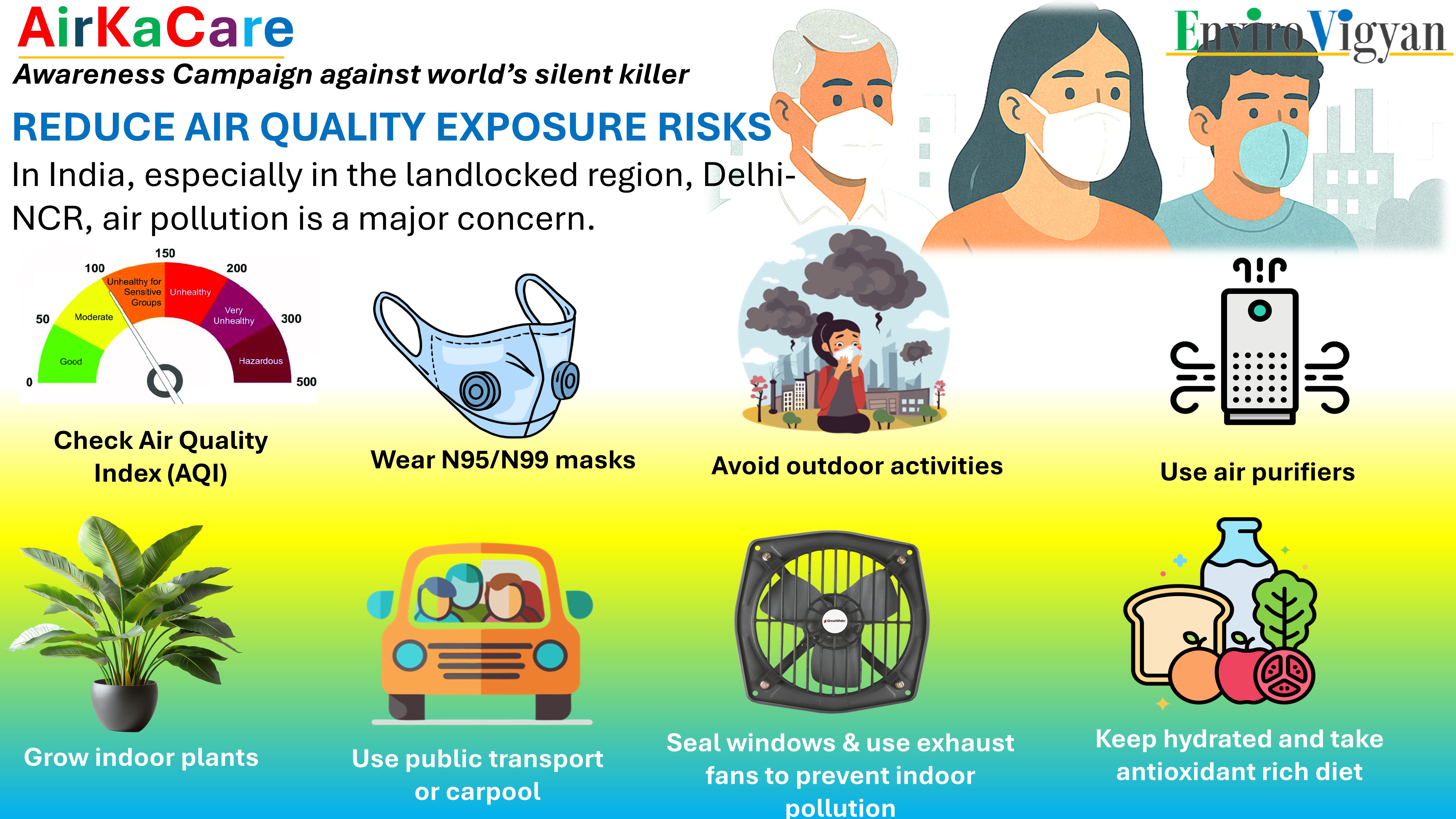From Smog to Solutions: Delhi’s Path to Cleaner Air

From Smog to Solutions: Delhi’s Path to Cleaner Air
Date: 06 July 2025
Author: Dr. Anchal Garg
Air pollution in India has escalated to alarming levels, particularly in urban and industrial areas. Delhi-NCR—one of the most densely populated and landlocked regions—stands at the epicenter of this crisis. Each winter, the city is engulfed by a dense, toxic haze that drastically reduces visibility and triggers serious health emergencies.
The reasons are complex but well-documented:
- Geographical Traps: Delhi’s location, surrounded by the Himalayas and Aravalli ranges, prevents the natural dispersion of pollutants.
- Vehicular Emissions: According to the Centre for Science and Environment (CSE), vehicles contribute nearly 39% of Delhi’s PM2.5 levels.
- Stubble Burning: Post-harvest fires in Punjab and Haryana account for over 30% of winter pollution spikes, as shown in satellite studies by NASA and SAFAR-India.
- Industrial Activities: Unregulated emissions from surrounding industrial belts add to the toxic cocktail of pollutants.
- Construction Dust: A recent Delhi Pollution Control Committee (DPCC) report links construction dust to 17% of citywide particulate matter levels.
- Weather Phenomena: Cold air inversions trap pollutants near the ground, causing pollution episodes that last days or weeks.
How Does This Impact Health?
Air pollution is now India’s second-biggest risk factor for disease and death (Global Burden of Disease Study, 2020). Long-term exposure can lead to:
- Chronic respiratory illnesses (asthma, COPD)
- Cardiovascular diseases
- Cognitive decline and mental health disorders
- Reduced immunity and developmental issues in children
But beyond waiting for policy reforms, there are actionable, science-based steps each citizen can take right now to protect their health and contribute to the collective fight against air pollution.
Evidence-Backed Steps to Reduce Personal Air Pollution Exposure
1. Use Indoor Air Purifiers
Studies by IIT-Delhi and AIIMS demonstrate that HEPA air purifiers can reduce indoor PM2.5 levels by up to 60-70%. Choose purifiers with HEPA filters and activated carbon layers for maximum effectiveness, especially during high-pollution seasons.
2. Wear N95/N99 Respirators Outdoors
Clinical trials confirm that certified N95/N99 masks reduce inhalation of PM2.5 particles by over 95%, offering significant protection during smoggy days, particularly for commuters and outdoor workers.
3. Monitor Air Quality Index (AQI) Religiously
Digital tools like SAFAR-India, CPCB’s Sameer App, and global apps like IQAir provide real-time AQI updates. Plan your day around these indices—limit outdoor exposure when the AQI crosses 150 (unhealthy) and avoid strenuous activity altogether above 200 (very unhealthy).
4. Integrate Indoor Plants for Added Benefits
While plants alone cannot replace mechanical filtration, research from NASA’s Clean Air Study suggests that species like Snake Plant (Sansevieria), Areca Palm, and Spider Plant can absorb specific volatile organic compounds (VOCs) like benzene and formaldehyde, making them useful companions indoors.
5. Prioritize Public Transit, Carpooling & Electric Mobility
Switching to public transport, EVs, and shared rides directly reduces urban pollution loads. A 2019 TERI study estimated that shifting 30% of Delhi’s commuters to public transit could cut vehicular emissions by up to 24%.
6. Avoid Outdoor Activities During Pollution Peaks
Exposure during exercise increases pollutant intake by up to 20 times due to deeper breathing. Experts advise indoor workouts or choosing cleaner-air windows (typically mid-afternoon or post-rainfall) for outdoor activities during severe AQI days.
7. Seal Homes and Use Ventilation Wisely
Seal leaky windows and doors to prevent pollutant infiltration. Utilize kitchen and bathroom exhaust fans strategically. Studies from Lawrence Berkeley National Laboratory recommend mechanical ventilation with HEPA filtration for optimal indoor air quality, especially in high-traffic areas.
8. Maintain a Hydrated, Antioxidant-Rich Diet
Pollutants induce oxidative stress and inflammation. Diets rich in Vitamin C, E, omega-3 fatty acids, turmeric, and green leafy vegetables have been shown to reduce pollution-induced cellular damage (as per studies published in The Lancet Planetary Health). Hydration also aids in natural detoxification.
Why These Actions Matter
Protecting yourself from pollution is not merely about comfort—it’s about safeguarding your long-term health, particularly your lungs, heart, and brain. Additionally, these personal choices reduce the city’s overall pollution footprint, driving change from the ground up.
Collective Action, Community Impact
Solving air pollution requires systemic change—stronger policies, cleaner fuels, sustainable urban planning—but individual action remains a key part of the equation.
By integrating these steps into your daily life, you:
- Shield yourself from harmful pollutants
- Inspire others to take responsibility
- Help shift societal norms toward cleaner living
Let’s Breathe Better, Together
At EnviroVigyan, we believe that clean air is not just a privilege—it’s a fundamental right. Through science, awareness, and community collaboration, we can transition from smog to solutions.
I invite you to share this guide widely—within your family, neighborhood, and workplaces.
Because cleaner air begins with informed choices—and the courage to act. ~ Anchal Garg